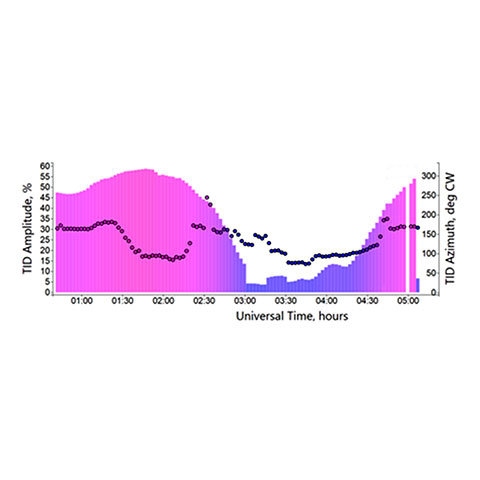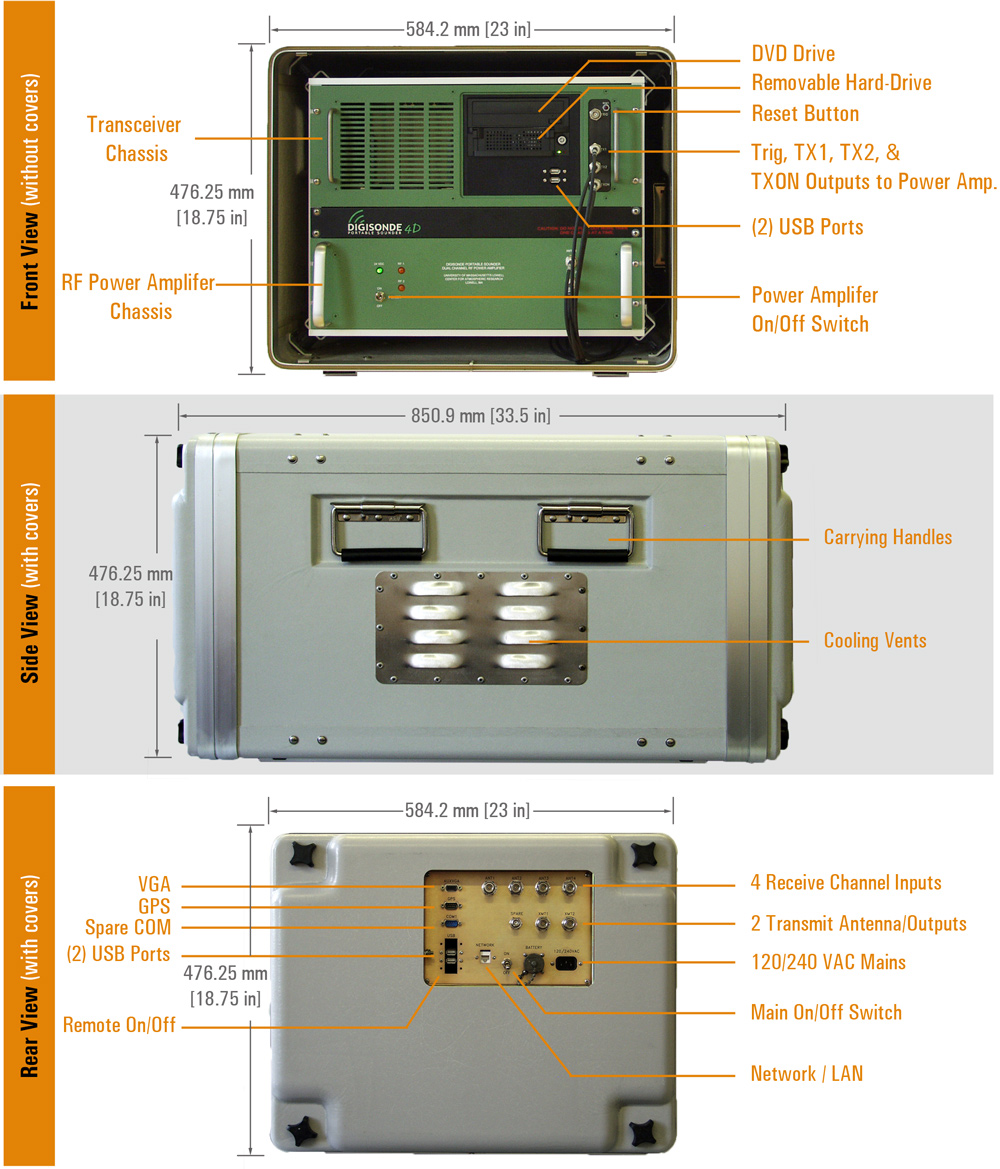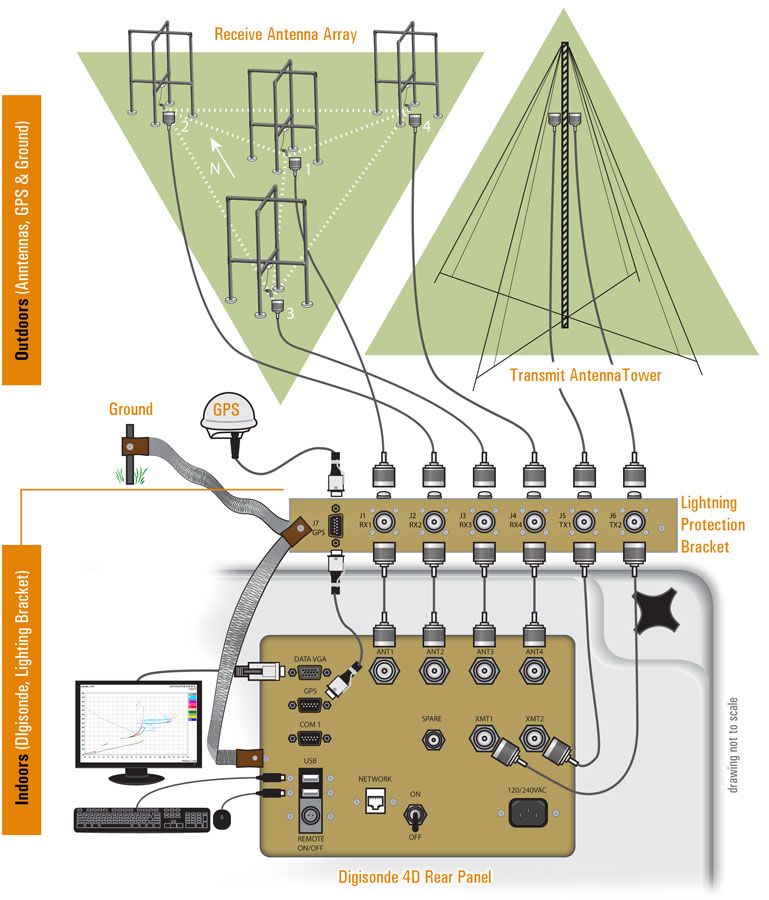Introduction: Digisonde4D
Lowell Digisonde International manufactures and markets the Digisonde-Portable-Sounder-4D (DPS4D), the latest model in the DIGISONDE® series of advanced ionosondes built in Lowell since 1969. The Digisonde is an ionospheric radar that uses high-frequency radio waves for the remote sensing of the ionosphere, the ionosonde technology pioneered by Sir Edward Appleton in the late 1920s. DIGISONDE stands for “Digital Ionospheric Goniometric IonoSONDE”. The DPS4D is the only commercially available ionosonde system that measures all parameters of the ionospherically reflected HF radio signals, and automatically calculates the local ionospheric electron density profile in real time.


Features: Unmatched Performance, Programming Flexibilty, Reliability
Measurements
Measurement of all observable parameters of the ionospheric echoes: Amplitude, phase, direction of arrival, virtual height, Doppler frequency & spread, ordinary & extraordinary wave polarization identification.
Electron Density
Real-time ionospheric electron density profiles with density error bars for each height; vertical ionospheric total electron content (ITEC); real time classical ionospheric characteristics including foF2, foF1, foE, foEs, MUF(3000)F2, hmF2, hmF1, hmE, and the IRI parameters B0, B1, and more.
Real-time
Real-time E and F region drifts.
Real-time Internet data dissemination.
Real-time radio skymaps of ionospheric reflection points for vertical and oblique Digisonde-to-Digisonde sounding
Output Format
Compliance of output format for autoscaled ionogram and profile data with the URSI approved data exchange format SAO-XML.
Low-interference
Low-interference solid state transmitter capable of transmitting RHC and LHC or linear polarizations with peak power of less than 300 W.
Programmable
Programmable selection of any number of “null” frequencies or frequency bands for which no RF power is transmitted during an ionogram scan.
Remote Control
Remote systems operation & Remote error diagnostics via the Internet.
Networking
Proven capability for automated bi-static oblique sounding between two or more DPS4Ds.
GIRO: Simultaneous Ionospheric Observations
Around The Globe
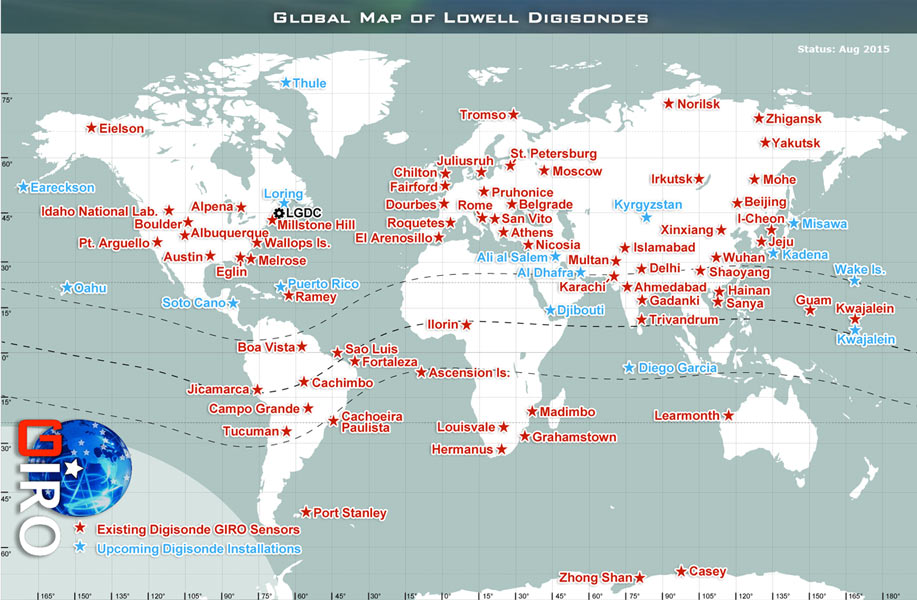
The Digisonde Global Ionosphere Radio Observatory “GIRO” makes simultaneous measurements every 5 or 15 minutes at more than 60 locations around the world.
Real-time Station Feed
Currently 37* GIRO stations feed data in real-time to LGDC. * as of August 2015
Applications: Research & Monitor With Confidence
Space Weather Monitoring
High reliability and capability of remote control makes the Digisonde an excellent building block for unmanned operational Ionosphere monitoring networks.
Travelling Ionospheric Disturbance Studies
Direct TID measurements with vertical and oblique sounding.
Equatorial and Auroral Zone Studies
DPS4D Doppler frequency and angle-of-arrival measurements provide enhanced capability when monitoring Ionospheric structure and dynamics.
Synchronized Oblique Transmission / Reception
GPS-disciplined timing provides built in synchronization between all DPS4D systems and allows easy setup of transmission / reception between systems.
Particular Events / High Cadence Campaigns
Highly flexible scheduling protocols support different research objectives requiring high data sampling cadences and complex series of measurements.
Data: Visualize The Ionosphere
Hardware: Layout and Dimensions
Specifications: Technology To Precisely Measure The Ionosphere
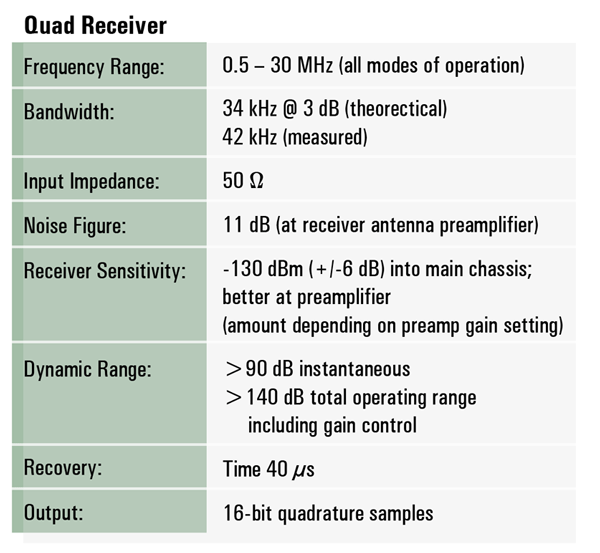
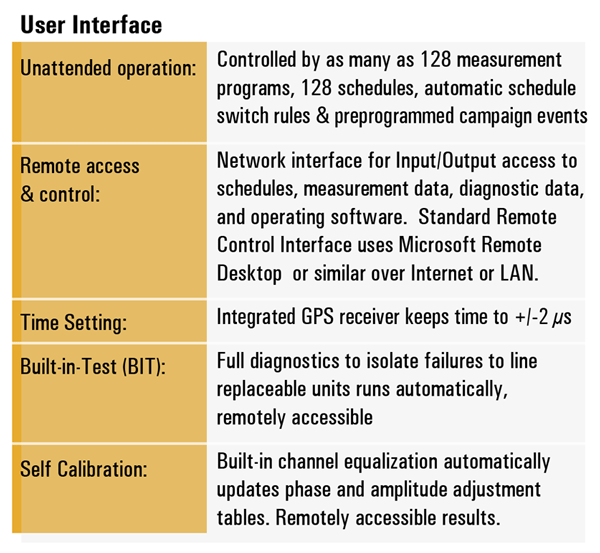
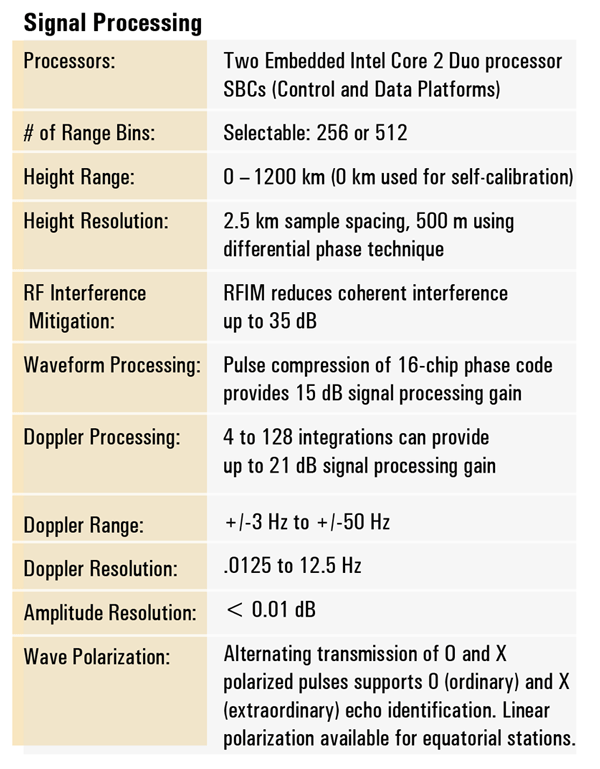


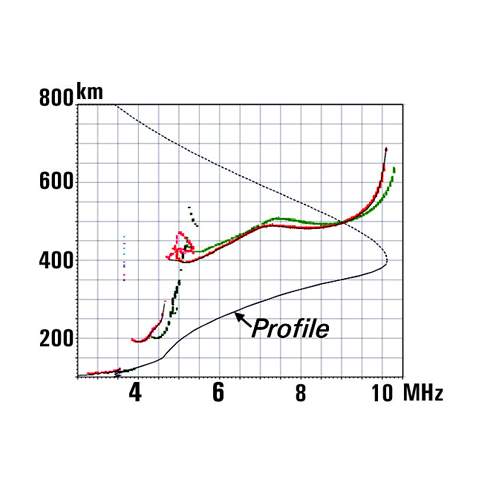
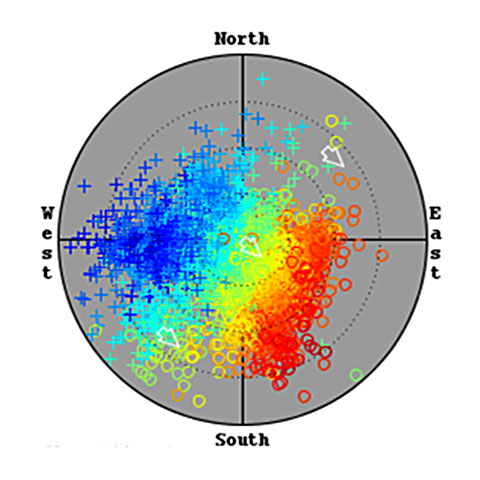

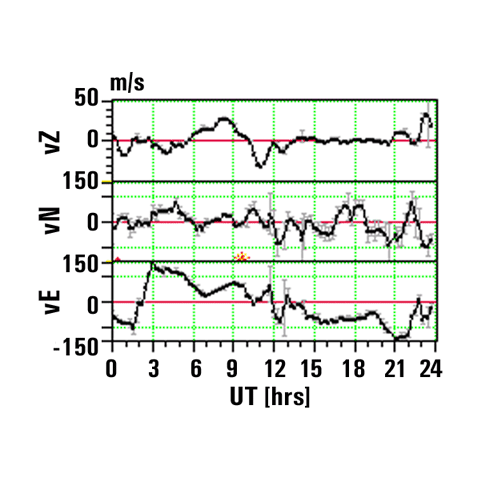
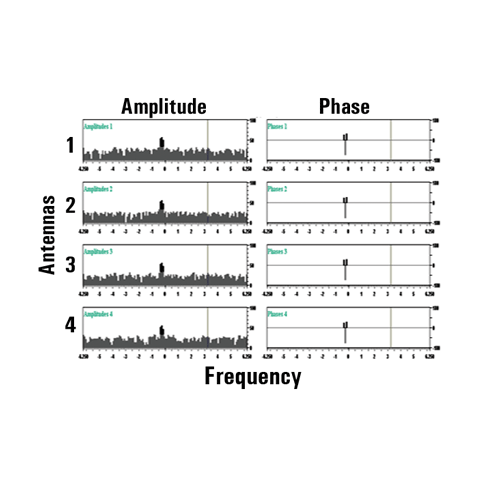
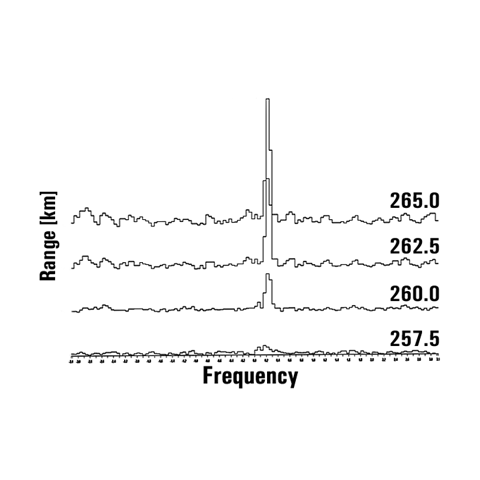
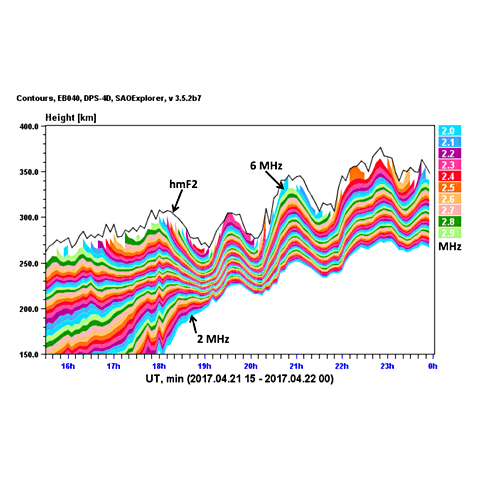
 , where fN = f is the electron plasma frequency; the colour sequence repeats every ten lines, i.e., at 3.0 MHz, 4.0 MHz, etc.
, where fN = f is the electron plasma frequency; the colour sequence repeats every ten lines, i.e., at 3.0 MHz, 4.0 MHz, etc.
